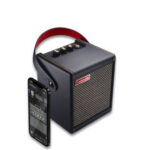Learning guitar can seem daunting at first, but mastering a few basic chords is the perfect starting point. In fact, with just a handful of 6 String Guitar Chords, you can unlock a vast library of popular songs and begin your musical journey. These foundational chords, often referred to as open chords, are the building blocks for countless melodies and progressions.
 Essential Easy Guitar Chords for Beginners
Essential Easy Guitar Chords for Beginners
It’s crucial to not only learn how to play these essential 6 string guitar chords but also to memorize their names and shapes. These chords form the core of open guitar chords, and with consistent practice, you’ll be able to transition smoothly between them. Once you’re comfortable with these shapes, exploring the F barre chord shape will open up even more possibilities, allowing you to play a wider range of chords by moving this shape up and down the guitar neck.
Consider a popular song like “The Passenger” by Iggy Pop; it’s built upon a simple yet effective chord progression of Am, F, C, and G. This demonstrates just how far you can go with these fundamental 6 string guitar chords.
When looking at the chord diagrams, you’ll notice numbers within the dots. These numbers indicate which finger to use: 1 for your index finger, 2 for your middle finger, 3 for your ring finger, and 4 for your pinky finger. The F chord diagram illustrates a barre across multiple strings, requiring your index finger to press down all the strings to produce the correct sound.
 10 Essential Basic Guitar Chords – Chord Diagrams by SixStringSensei.com
10 Essential Basic Guitar Chords – Chord Diagrams by SixStringSensei.com
Understanding Movable Barre Chords
The F chord shape is a gateway to understanding movable barre chords. By using your index finger as a “barre,” you effectively create a movable nut, similar to the guitar’s actual nut at the headstock. Initially, playing barre chords, especially the F chord close to the nut, might feel challenging due to the required finger strength. However, as your hand strength improves, it will become easier. A helpful practice tip is to start practicing this barre chord shape further up the neck where less pressure is needed.
Moving this F barre chord shape up the neck changes the root note and thus the chord itself. Each fret represents a half step. Move the F shape up one fret, and it becomes an F# chord. Move it up two frets from the original F position, and you have a G chord. Another two frets up, and it transforms into an A chord. Learning this barre chord shape alongside your open G and A chords provides you with multiple ways to play these essential chords.
Never underestimate the power of mastering these basic 6 string guitar chords. While they are beginner-friendly, they remain essential tools for guitarists of all levels, from novice to professional. These chords are the foundation upon which you will build your guitar playing skills, and you’ll continue to use them throughout your musical journey, regardless of how advanced you become.

